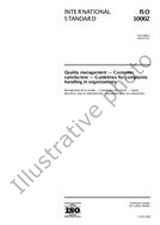We need your consent to use the individual data so that you can see information about your interests, among other things. Click "OK" to give your consent.

ISO/IEC 29341-18-2-ed.1.0
Information technology - UPnP device architecture - Part 18-2: Remote Access Device Control Protocol - Remote Access Client Service
Translate name
STANDARD published on 29.8.2011
The information about the standard:
Designation standards: ISO/IEC 29341-18-2-ed.1.0
Publication date standards: 29.8.2011
SKU: NS-942586
The number of pages: 5
Approximate weight : 15 g (0.03 lbs)
Country: International technical standard
Category: Technical standards ISO
The category - similar standards:
Annotation of standard text ISO/IEC 29341-18-2-ed.1.0 :
The electronic version of this International Standard can be downloaded from the ISO/IEC Information Technology Task Force (ITTF) web site. ISO/IEC 29431-18-2:2011 Contains device definition which is compliant with the UPnP Device Architecture version 1.0. It defines a device type referred to herein as RAClient device. The RAClient device is a UPnP device that allows control points to configure Remote Access Clients. This device provides control points with the following functionality: - Enumerate the Remote Access Transport mechanisms supported by the Remote Access Client (RAC). - Enumerate the Credentials Delivery mechanisms supported by the RAC. - Configure active Remote Access Transport profiles.
We recommend:
Technical standards updating
Do you want to make sure you use only the valid technical standards?
We can offer you a solution which will provide you a monthly overview concerning the updating of standards which you use.
Would you like to know more? Look at this page.



 Cookies
Cookies
